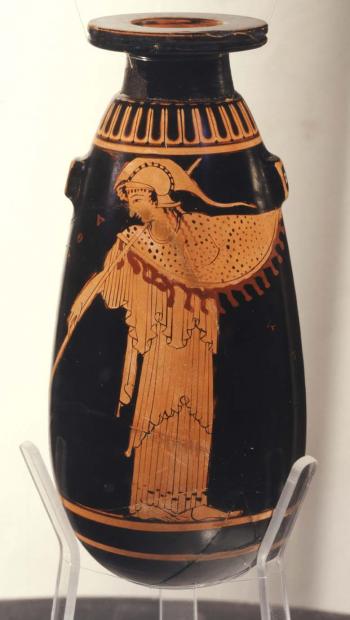Alabastron
MOO - Museum of Olives and Oil

Foundry Painter
red-figure ceramic
490-480 B.C.
This alabastron (a small vessel for holding oil) can be stylistically dated to 490-480 B.C. and is the work of fine ceramics painter known as Foundry Painter whose oeuvre is often used to illustrate the emergence of ancient creative processes such as bronze sculpture foundry work and marble carving. In this piece a young foundryman is portrayed carefully applying a blazon to the shield of the goddess Athena, shown facing him in a peacelike posture with her head thrown back and the point of her spear towards the ground.
The Greek inscription kalos (beautiful) refers to the artisan whose head is crowned with a laurel wreath representing kalokagathia, an ideal of gentlemanly personal conduct; the artefact he is working on, the shield, (fruit of his art) also bears the inscription kalos. There is a strong link with Athena: the goddess (to whom is attributed the gift of olives to humankind) has requested the services of the young man to decorate her shield thus demonstrating the bronzeworker’s ability.